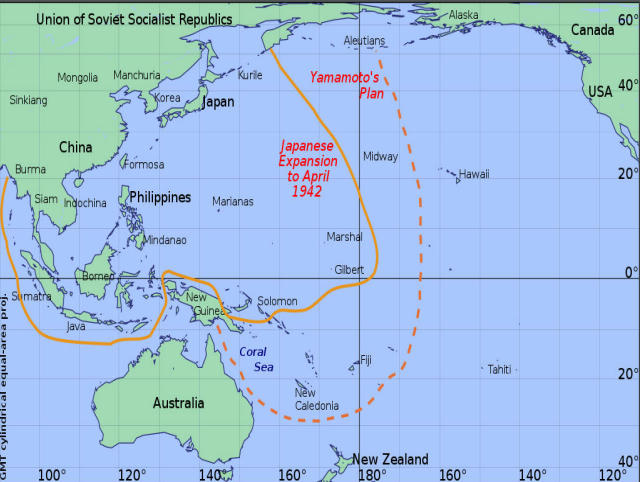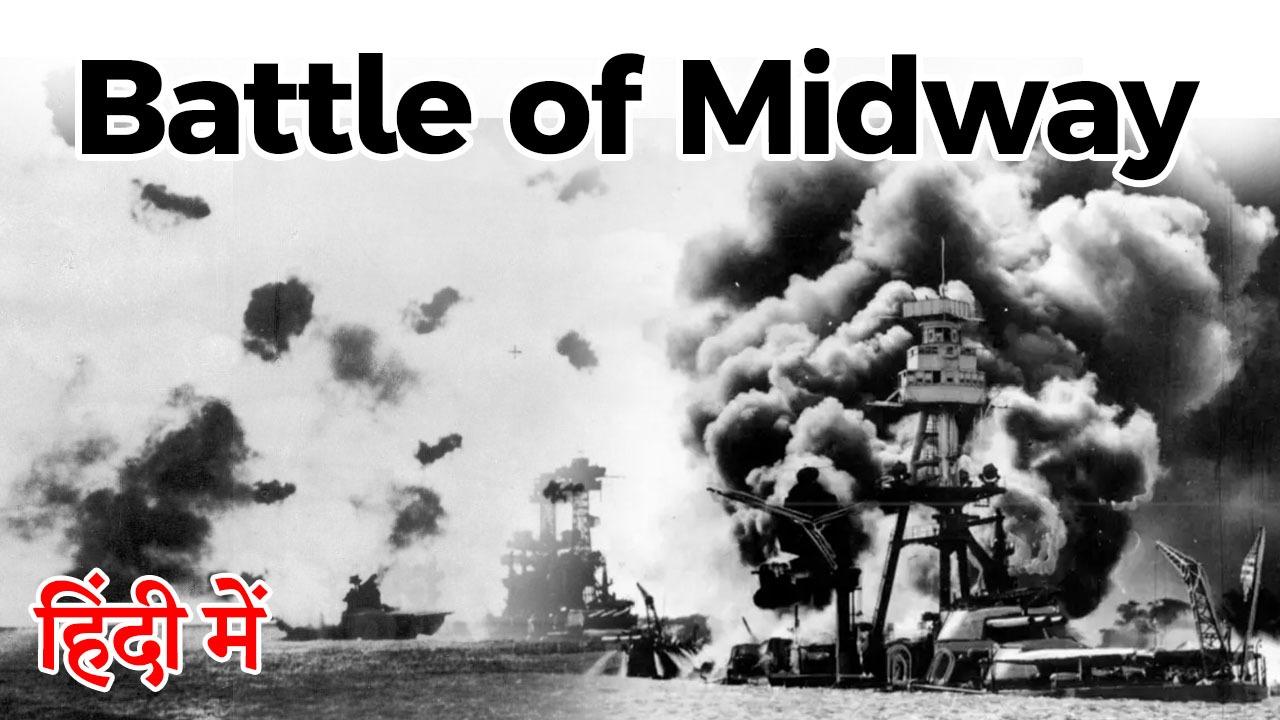Table of Contents
BACKGROUND

- Japan’s efforts to establish clear naval and air superiority in the western Pacific first hit a snag in the Battle of the Coral Sea in May 1942, when the U.S. fleet turned back a Japanese invasion force headed for New Guinea.
- Despite the setback, Admiral Isaroku Yamamoto, commander of the Imperial Japanese Navy, was convinced his forces enjoyed a numerical advantage over the Americans.
BACKGROUND
- Hoping to replicate the success of the Pearl Harbor attack, Yamamoto decided to seek out and crush the rest of the U.S. Pacific fleet with a surprise attack aimed at the Allied base at Midway Island. Midway is located in the Pacific Ocean almost directly in between the United States and Japan.
- After a diversionary attack by a smaller Japanese force on the Aleutian Islands, off the coast of Alaska, Yamamoto planned a three-pronged approach toward Midway.
- First, an air attack on the island launched from four firstline Japanese aircraft carriers, Second, an invasion force of ships And finally, once expected U.S. reinforcements from Pearl Harbor arrived, a joint strike by Nagumo’s forces and Yamamoto’s own fleet.
FAILED PLAN
- U.S. Navy cryptanalysts had begun breaking Japanese communication codes early in 1942, and knew for weeks ahead of time that Japan was planning an attack in the Pacific at a location they called “AF.”
- With Japan’s fleet so widely dispersed, Yamamoto had to transmit all strategy over the radio, enabling Navy cryptanalysts based in Hawaii to figure out when Japan planned to attack (June 4 or 5) and the planned order of battle of the Imperial Japanese Navy.
- With this information, Admiral Chester W. Nimitz, commander in chief of the U.S. Pacific Fleet, could develop a plan to combat the invasion.
BATTLE
- After the diversionary Japanese attack on the Aleutian Islands on June 3, a group of U.S. B-17 Flying Fortress bombers flew from Midway to attack Kondo’s invasion force This unsuccessful attack marked the first military engagement in the Battle of Midway.
- Before dawn the next day, more B-17s left Midway for a second attack on the Japanese invasion force, also unsuccessful.
- Meanwhile, Nagumo launched the first phase of Japan’s attack as planned, sending 108 Japanese warplanes from the four aircraft carriers to strike Midway.
BATTLE
- Shortly after that, just as his pilots informed Nagumo that another airstrike against the base would be necessary, U.S. aircraft launched from Midway began attacking the four Japanese carriers, without success.
- As Nagumo was rearming Japanese planes for a second air attack, a Japanese scout plane spotted portions of the U.S. fleet.
- Nagumo switched tactics, ordering planes that were still armed to prepare to attack the U.S. ships once the rest of the Japanese planes returned from Midway.Meanwhile, a wave of U.S. Devastator torpedo bombers from the U.S. carriers Hornet and Enterprise arrived to attack the Japanese ships.
VICTORY FOR US
- As the Japanese refueled and rearmed their planes, another wave of U.S. carrier-launched bombers struck, hitting three Japanese carriers—Akagi, Kaga and Soryu—and setting them ablaze.
- Though major combat in the Battle of Midway was over by the evening of June 4, U.S. troops at sea and on Midway Island continued their attacks on the Japanese over the next two days.
- The Hammann sank in minutes; the Yorktown eventually capsized and sank the following day. On June 6, Yamamoto ordered his ships to retreat, ending the Battle of Midway.
IMPACT
- In all, Japan had lost as many as 3,000 men (including more than 200 of their most experienced pilots), nearly 300 aircraft, one heavy cruiser and four aircraft carriers in the battle, while the Americans lost the Yorktown and Hammann, along with around 145 aircraft and approximately 360 servicemen.
- As a result of the U.S. victory in the Battle of Midway, Japan abandoned its plan to expand its reach in the Pacific, and would remain on the defensive for the remainder of World War II. The battle injected U.S. forces with confidence and drained Japanese morale, turning the tide of war in the Pacific strongly in favor of the Allies.
World History Free PDF






















 WhatsApp
WhatsApp